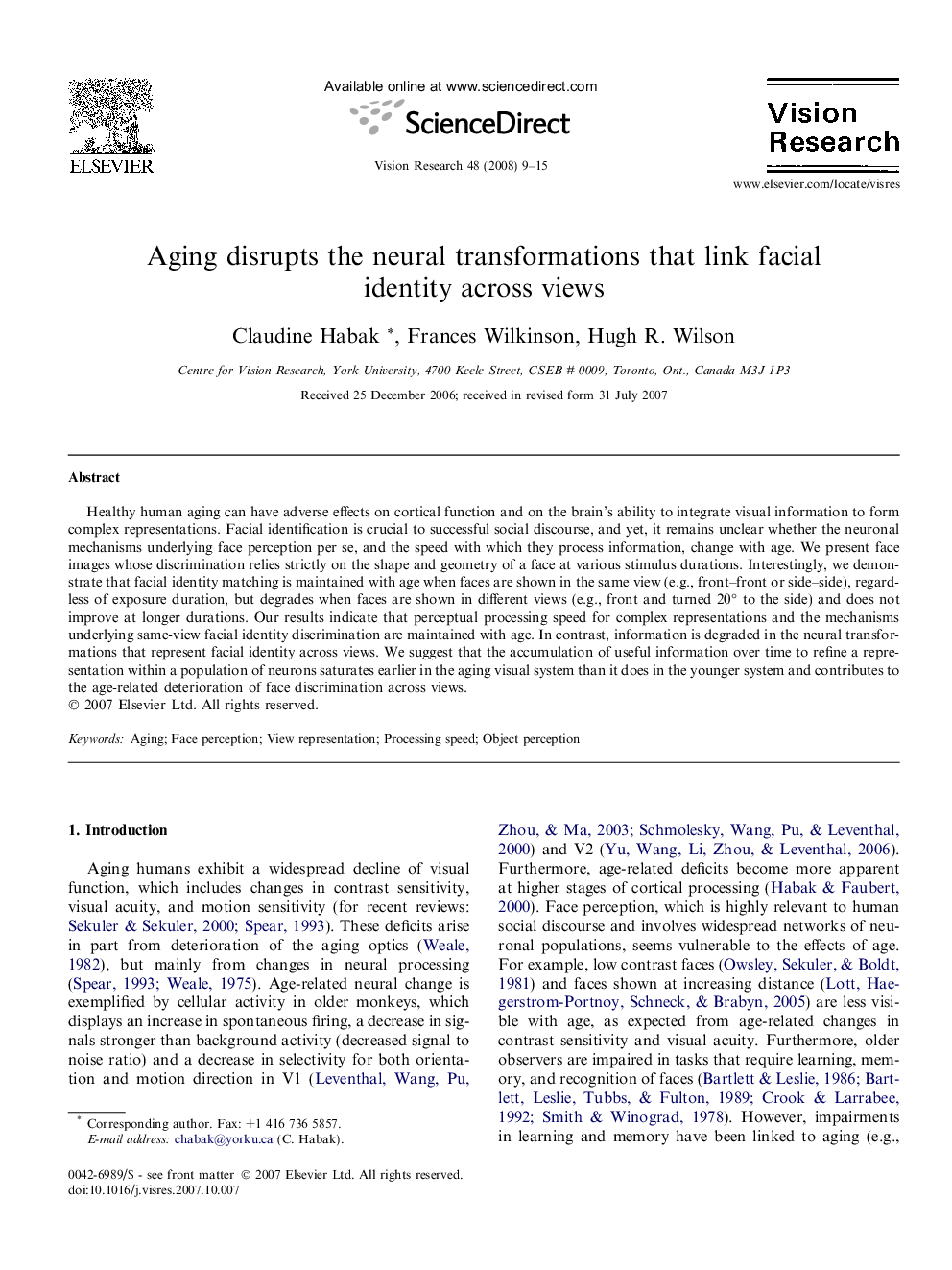| Article ID | Journal | Published Year | Pages | File Type |
|---|---|---|---|---|
| 4035962 | Vision Research | 2008 | 7 Pages |
Healthy human aging can have adverse effects on cortical function and on the brain’s ability to integrate visual information to form complex representations. Facial identification is crucial to successful social discourse, and yet, it remains unclear whether the neuronal mechanisms underlying face perception per se, and the speed with which they process information, change with age. We present face images whose discrimination relies strictly on the shape and geometry of a face at various stimulus durations. Interestingly, we demonstrate that facial identity matching is maintained with age when faces are shown in the same view (e.g., front–front or side–side), regardless of exposure duration, but degrades when faces are shown in different views (e.g., front and turned 20° to the side) and does not improve at longer durations. Our results indicate that perceptual processing speed for complex representations and the mechanisms underlying same-view facial identity discrimination are maintained with age. In contrast, information is degraded in the neural transformations that represent facial identity across views. We suggest that the accumulation of useful information over time to refine a representation within a population of neurons saturates earlier in the aging visual system than it does in the younger system and contributes to the age-related deterioration of face discrimination across views.
